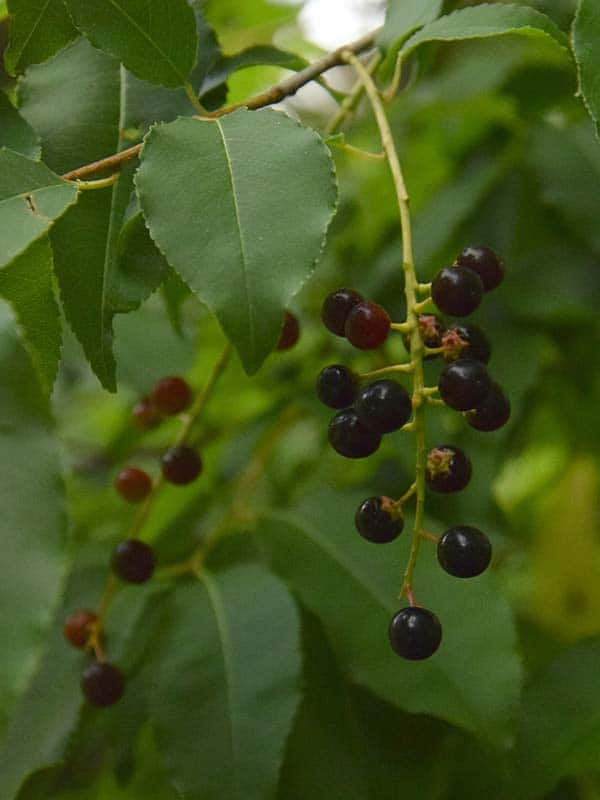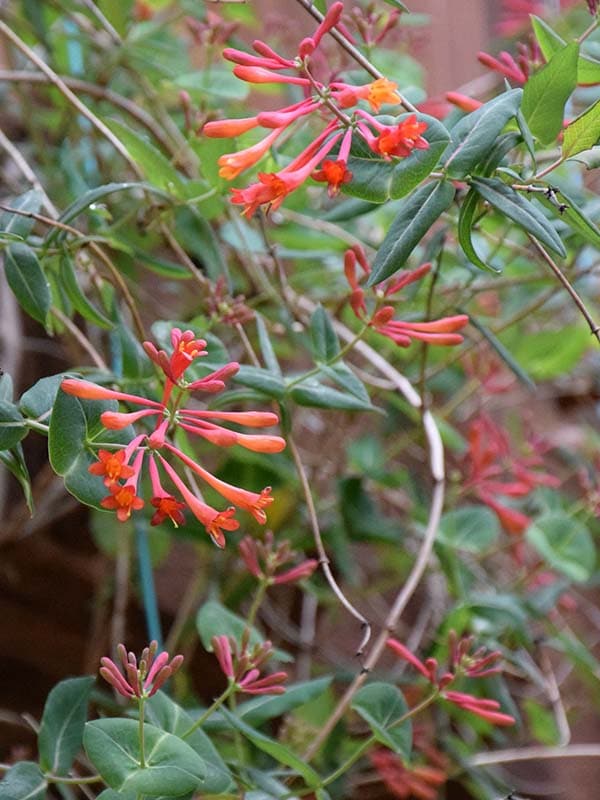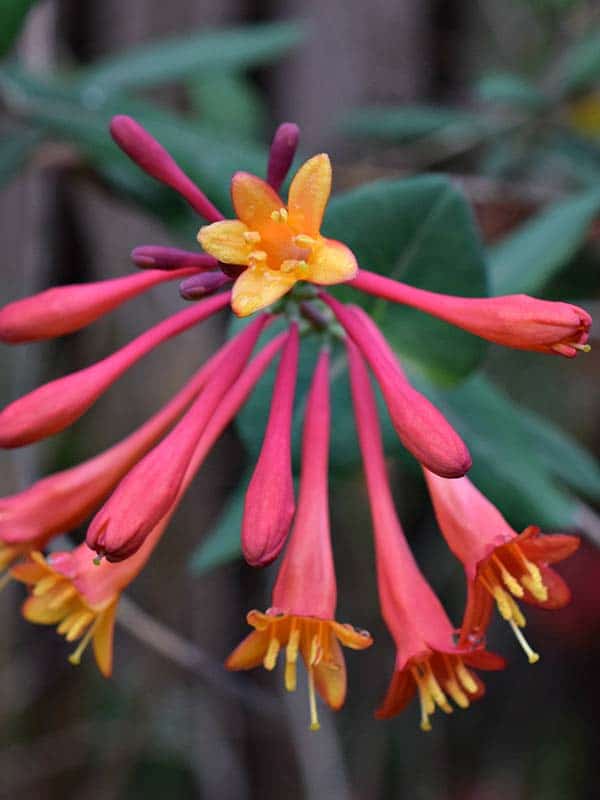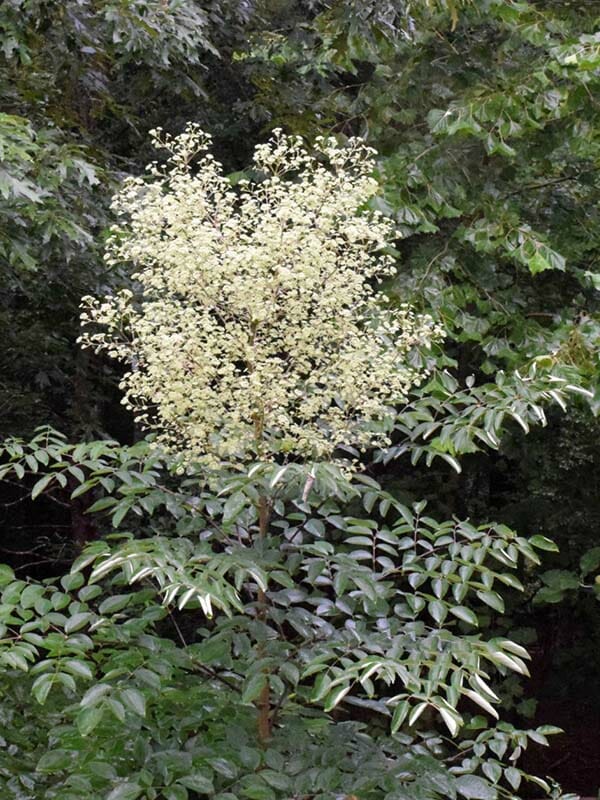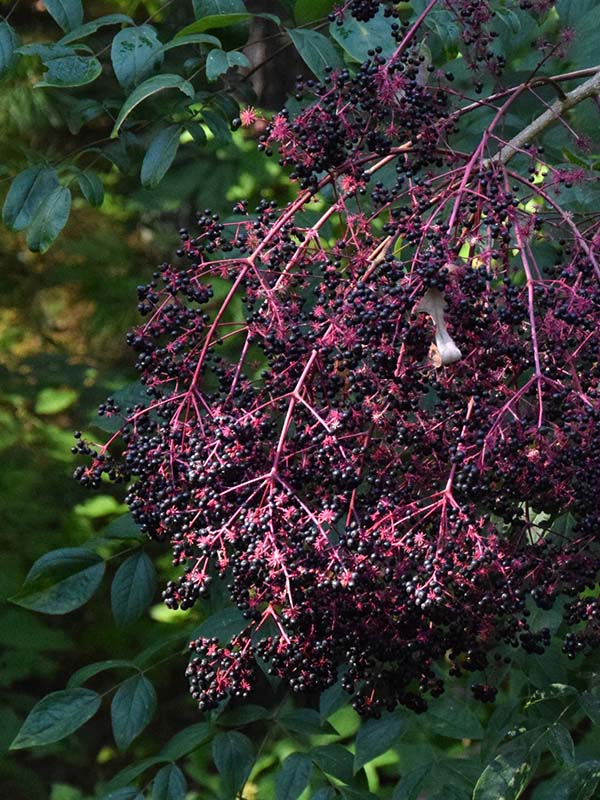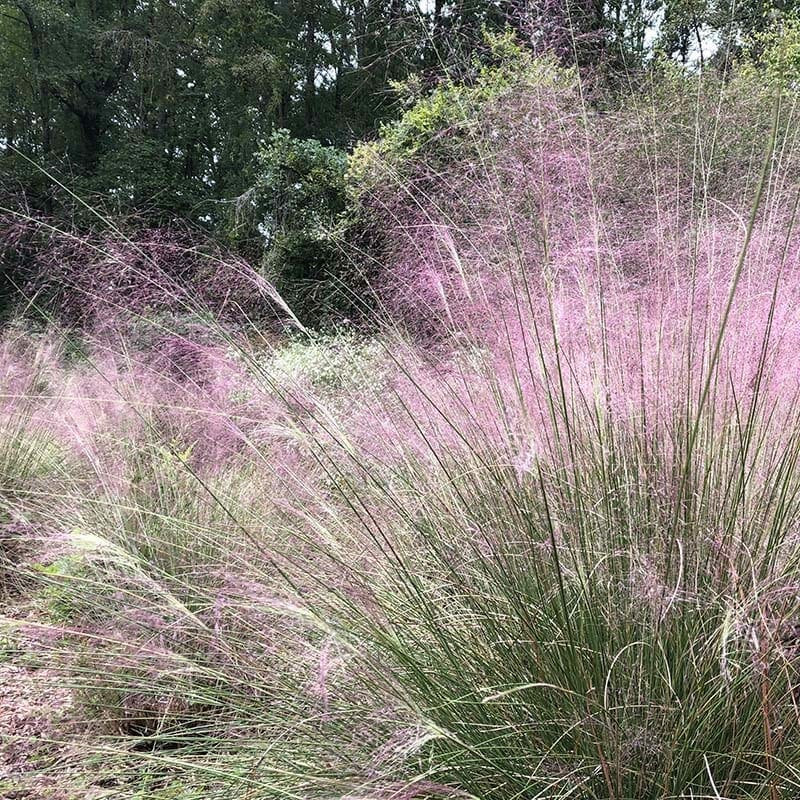Vote for the GNPS 2019 Plant of the Year!
This year’s POY candidates include a grass, a vine, a tree, two shrubs, and a perennial. Their profiles are listed below, followed by a poll where you can vote for your favorite. Only members can vote, and you will be prompted for your GNPS login and password when you click on the button below. Online voting opens October 23 at 7pm and closes on November 12 at 6pm. Members who don’t vote online may cast a paper ballot at the November 13 meeting.
Black cohosh
Scientific name: Actaea racemosa (syn. Cimicifuga racemosa)
Common name: Black cohosh
Family: Ranunculaceae
Plant type: Perennial
Black cohosh (Actaea racemosa) is a woodland plant, 3 to 8 feet tall, with compound toothed leaves and tall, showy spikes of white flowers that can rise up to 6 feet above the foliage. The blooms occur in early to mid-summer and are visited by bees and butterflies, as well as numerous moths, which are attracted to its tall white candle-like blooms at night. Black cohosh’s leaves are the larval food source for Appalachian azure and spring azure butterflies. The deep green and tripinnately divided leaves are fern-like and attractive even without their flowers. Black cohosh was used by Native Americans to repel biting insects, giving rise to another of its common names, bugbane. Its native habitat is rocky woods. It grows best in full to partial shade — as long as it gets a couple of hours of morning light, and prefers well-drained soils that are rich in humus and kept moist.
Credits: Text by Denise Hartline. Photos by Ellen Honeycutt.
Black cherry
Scientific name: Prunus serotina
Common name: Black cherry; rum cherry
Family: Rosaceae
Plant type: Tree
Most POY candidates over the years have not been noteworthy for their economic significance, but wild black cherry (Prunus serotina) is an exception. Its strong, close-grained hardwood is utilized widely in cabinetry, paneling, gunstocks, musical instruments, and other fine woodworking items. Most commonly found in forest coves, black cherry trees can grow over 100’ tall, with spreads of up to 70’. The leaves are shiny and simple, and the young bark is smooth, with rows of horizontal lenticels. As the tree matures, the bark becomes dark and flaky. Most parts of the tree are poisonous; however, the inner bark is valued in making cough medicine, and the fruit is edible, albeit bitter. Black cherry is not necessarily a garden plant, but is of great ecological importance, both as a larval host to caterpillars and as an animal food source. In the spring, the tree produces a profusion of dangling, lacy, fragrant, white blossoms–a pollinator bonanza. In autumn, small, pea-sized, red-to-almost black fruits feed birds and many mammals, from mice to bears.
Credits: Text by Valerie Boss. Photos by Ellen Honeycutt.
Buttonbush
Scientific name: Cephalanthus occidentalis
Common name: Buttonbush
Family: Rubiaceae
Plant type: Shrub
Buttonbush (Cephalanthus occidentalis) is a deciduous, multi-stemmed shrub that thrives in wetlands, marshes, and along lakes and streams. Throughout the summer, clusters of fragrant flower heads extend on long stems from branch termini and leaf axils. Each head resembles a creamy white pincushion, covered in tiny, tubular flowers. The “pins” are styles, which poke out beyond the corollas, with rounded stigmas at the tips that are rich in yellow pollen–a feast for bees and butterflies. Hard, round, reddish-brown seed capsules, each containing 4 nutlets, appear in fall and persist throughout the winter. These provide an excellent food source for waterfowl, particularly Wood Ducks. The leaves are opposite, or sometimes whorled in groups of 3 or 4, and can be toxic to livestock. Growing to a height of 8-12 feet, this is a wonderful plant for gardens in wetlands and floodplains. It can grow in sun or shade, and unlike many species, can tolerate prolonged submergence.
Credits: Text by Valerie Boss. Photos by Ellen Honeycutt.
Coral honeysuckle
Scientific name: Lonicera sempervirens
Common name: Coral honeysuckle
Family: Caprifoliaceae
Plant type: Vine
Coral honeysuckle (Lonicera sempervirens) creeps along the ground and twines gently upward, often climbing over low plants and shrubs. Unlike invasive Japanese honeysuckle, this native vine reaches a maximum length of only 15’ and can easily be contained by pruning. In early spring, coral honeysuckle’s leaves have a purplish tinge, which makes it easy to distinguish from other vines. The leaves grow up to 3” long, and vary in shape, from elongated elipses with margins that turn under, to more rounded ovals. Those at the ends of the stems are fused, and in early summer they are pierced in the center by whorled clusters of multiple, 1-2” long tubular flowers, each having 5 tiny, spreading lobes. Scarlet on the outside and bright yellow on the inside, these eye-catching flowers bloom from April until July. Hummingbirds love them, as do moths and butterflies. Coral honeysuckle is a larval host to the Spring Azure butterfly and Snowberry Clearwing moths.
Credits: Text by Valerie Boss. Photos by Ellen Honeycutt.
Devil’s walking stick
Scientific name: Aralia spinosa
Common name: Devil’s walking stick
Family: Araliaceae
Plant type: Shrub
Growing to heights of 35’, but typically only half that tall, devil’s walking stick (Aralia spinosa) could be classified as either a shrub or small tree. This unique plant is deciduous, with huge, compound leaves–the largest in North America–topping its crown like an umbrella. Alternate, toothed, and bipinnately compound, the leaves can reach up to 4’ long. A prickly customer, devil’s walking stick has a trademark thorny trunk that might put off the wary gardener. But this would be a mistake. The shrub has lovely reddish fall foliage, as well as spectacular flowers and berries. Bloom time is in summer, when great pannicles of tiny, creamy flowers, 12-18” around, top the leaf crown for up to 10 days. The flowers transform to masses of juicy, purple-black berries in fall, which often droop under their own weight, and provide excellent forage for birds. Devil’s walking stick is easy to grow and transplant in most soils, reproducing by suckering, as well as by seed.
Credits: Text by Valerie Boss. Photos by Ellen Honeycutt.
Pink muhly grass
Scientific name: Muhlenbergia capillaris
Common name: Pink muhly grass
Family: Poaceae
Plant type: Grass
If you need a plant that’s pest-resistant, deer-resistant, and tolerant of poor soil, pink muhly grass (Muhlenbergia capillaris) is sure to please. Pink muhly is warm season perennial grass with attractive, feathery summer foliage that can reach two feet tall. It provides stunning autumn color, thanks to clouds of airy, foot-long, multi-branched flower stalks, colored a vivid pink-to-magenta. This grass species is distributed widely across the eastern and central US. In Georgia, it can be found in open woodlands and rocky outcrops, primarily in the Piedmont and coastal plain. It prefers full-to-partial sun, and is fairly drought tolerant once established. The plant flowers in September and October before its colorful plumes turn to tan-colored seed. It should be cut back in winter to promote the next year’s growth. A clumping grass, pink muhly is best planted in groups, and can be mixed among perennials for a contrast in foliage. Massive plantings can be breathtaking.
Credits: Text by Valerie Boss. Photos by Ellen Honeycutt and Valerie Boss.




